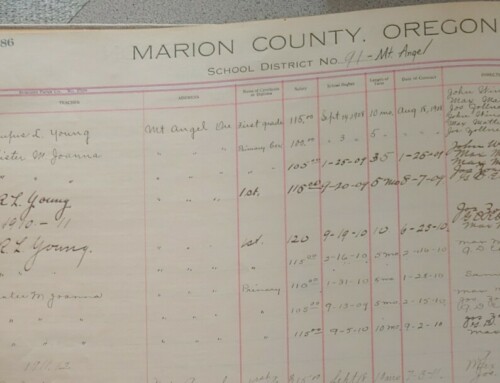by Richard van Pelt, WWI Correspondent
Our chronicle has taken us through the first year of the war and the signal event that triggered the nations going to war in August. Those who have followed this chronicle by following the links to the relevant issues of the Capital Journal may have noted how the papers became deadened to the conflict.
As journalists, the papers sought to report the events. They quickly found out that blind reporting turned them into mere mouthpieces for agendas having nothing to do with providing the necessary information so that readers could form equally informed opinions. By and large, the Salem papers maintained a neutral approach in reporting and editorial opinion.
Published letters from readers represented both sides in the conflict, though the strongest defense came from German and Austrian-Americans. This is not surprising, given the demographics of the region at this time.
A close reading of the papers indicates a connection between the official viewpoint of Berlin and the opinions expressed in reported articles and letters published, be they from relatives in Germany or by German-Americans.
With the sinking of the Lusitania, there is a shift in opinion. The focus begins to shift toward a defense of America’s right to traverse the seas as neutrals.
The tragedy of Belgium further begins to shift sympathy toward the Entente, now called the allies.
Editorially both papers are skeptical of what they see as fodder from the press offices in London, Paris, Berlin, Vienna and Petrograd. They recognize that the quality of reporting varies and they are quick to give credit to those few reporters who are at the front or where the conflict is taking place. The first hand reports are well written and retain a flavor and an immediacy after a century.
The problem with reporting events as they occur, even if after a century, is that individual battles, horrible as they are described and reported, may be mere skirmishes for campaigns that last for months, kill tens of thousands, and all for a few yards.
The battles will continue for more than 39 additional months. Editorials earlier in 1915 suggested that this struggle would continue until all sides were exhausted – until the last man standing. The United States will enter the war in 1917, but as the papers have already reported, we will enter the war with almost no trained battalions. It will take months to marshal the necessary forces, transport them, integrate them into the battle line, and even then it will be a close call.
The focus of the chronicle will now turn away from reporting war headlines to look at how we began to prepare for war – materially, emotionally, and economically.








Leave A Comment